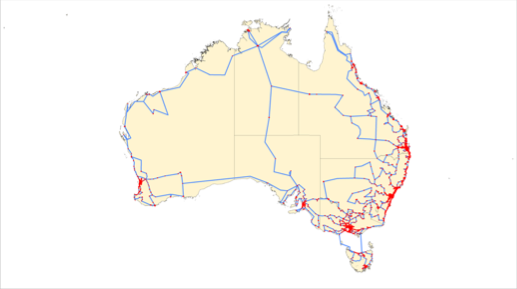 Well, the stalemate was going to end in one of two ways: Either Labor were going to give in to Senator Nick Xenephon’s demands and supply the NBN business plan, or Conroy was going to go on a bloody rampage through the Senate until only politicians supporting the structural separation of Telstra were left to vote. The second would have made a more interesting telemovie, but with only a day left before Parliament goes on Summer vacation, the Government has coughed up a summary of the NBN’s business plan.
Well, the stalemate was going to end in one of two ways: Either Labor were going to give in to Senator Nick Xenephon’s demands and supply the NBN business plan, or Conroy was going to go on a bloody rampage through the Senate until only politicians supporting the structural separation of Telstra were left to vote. The second would have made a more interesting telemovie, but with only a day left before Parliament goes on Summer vacation, the Government has coughed up a summary of the NBN’s business plan.
If you’re after a bit of light reading, you can download the PDF summary here. Worth quoting is the Equity requirement section, which might help you come up with some questions for Malcolm Turnbull:
6.7 Equity requirement
The equity requirement from Government based on our current plan is $27.1bn. This is based on advice from Goldman Sachs that NBN Co should be able to arrange debt funding.Irrespective of what amounts NBN Co decides to borrow, total funding requirements will begin to decline in 2021 (approximately when the rollout is complete), because at that point NBN Co will be generating cash from its operations in excess of any capital expenditure requirements.
From 2020 to 2022, NBN Co. will be replacing equity funding with debt funding until its reaches a steady-state debt:equity ratio of 1:1. NBN Co. expects to pay cash dividends, beginning in 2020, which in the aggregate would repay the government’s entire investment by 2034, even if no shares of NBN Co were sold to private investors. Since such dividends would be paid out of earnings, NBN Co. would continue to be appropriately capitalized and capable of being floated in the public market whenever the government chose to do so.
And in case you’re wondering, that map is from the business plan, outlining the 93% of the population covered by the fibre rollout.